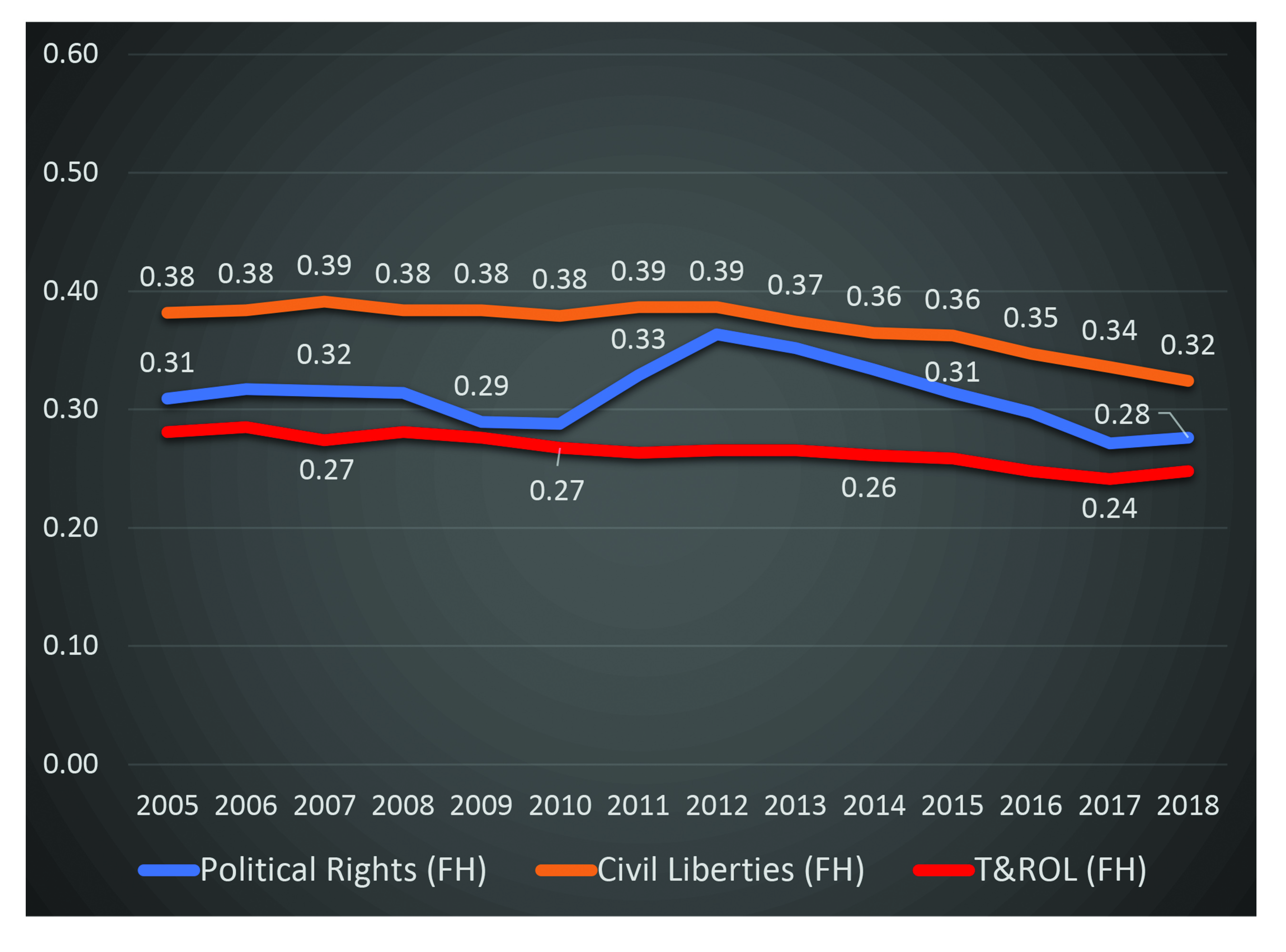Introduction
In 2007–2009 a major drought—the worst in forty years—struck northern Syria, the country’s agricultural breadbasket and a region that had already been suffering from loss of irrigation subsidies and water shortages. Syria’s young and fast-growing population meant that over a million people in the region were directly affected by the drought.1 In “the 2007/2008 agriculture season, nearly 75 percent of these households suffered total crop failure.”2 Hundreds of thousands left their lands and moved to the cities of Aleppo, Hama, and Damascus. Because Syria already was suffering from widespread popular discontent over political exclusion and corruption, these refugees added to the existing weight of urban misery and anger with the regime. Two years later, when a rebellion broke out in southern Syria, revolt quickly spread to these northern cities and precipitated civil war. The war in turn created millions more refugees, who spread to Lebanon, Jordan, and Turkey, and then to Europe, where a sudden surge of over one million war refugees sought asylum in 2015.3
Because Europe itself was already economically weakened and politically divided over issues stemming from the Great Recession of 2008–2009, the expansion and integration of the European Union, and reactions to Islamic terrorism in the Middle East and in Europe, it had great difficulties responding to this sudden surge of immigration. Heightened popular anxieties about disorderly migrants, and the clumsy administrative reaction to the immigration surge, brought further turmoil to the European Union through the vote for British exit, conflicts over immigration and asylum policy, and the growth of nationalist and anti-immigration parties. Fears of uncontrolled immigration provided opportunities for nationalist leaders to weaken democratic institutions in the name of building stronger states to defend the integrity of their nations.4
A few years later, in 2014–2018, an unusually severe drought hit Central America’s dry corridor, which runs through Guatemala, Honduras, and El Salvador. “Today [in 2018], towards the end of yet another ‘rainy season’ that brought no rain, many rural communities seem trapped in a dizzying vortex of catastrophe. Years of erratic weather, failed harvests, and a chronic lack of employment opportunities have slowly chipped away at the strategies Guatemalan families have used successfully to cope with one or two years of successive droughts and crop failures. But now, entire villages seem to be collapsing from the inside out.”5 Because Guatemala and Honduras have two of the youngest and fastest growing populations in all of the Americas,6 and because their own countries’ poor governance has provided too few jobs and enormous risks of violence, migrants are unable to find safe harbor within their own country. They have therefore been heading north, to the southern border of America, to seek asylum. The sudden spike in asylum seekers in 2018 and 2019 has overwhelmed the unprepared U.S. border services.7 Because the United States was already politically divided over issues of jobs, immigration, and racial tension, the surge of migrants further polarized politics. The surge of asylum seekers has fueled populist calls to reduce all forms of immigration, and emergency declarations to build a wall and threats to close the border to keep out immigrants.
In sum, climate change, rapid population growth, and poor governance—even in small and distant countries—is a toxic brew that can have significant downstream effects on the politics of rich democracies. In many parts of the world, the forecast is for worsening climate, continued high population growth, and poor governance in the coming decades. To reduce the threats of disorder and consequent migration surges, and the further undermining of democracy in rich countries out of anxiety and fear, better governance will be key. Better governance will be needed in developing countries to help them cope with stresses from climate change and to carry out policies that will reduce migration pressures. At the same time, better governance of immigration and asylum processes in rich countries will be needed so that the latter can enjoy immigration as a resource for growth, rather than see immigration as a threat to their nations.
There has been a tendency in the West to see sudden surges of immigration, and recently perhaps all foreign immigration, as tantamount to another invasion of the Huns. Yet this is terribly misguided. The Huns entered Europe as armed raiders seeking to appropriate Roman wealth. Today’s immigrants to NATO countries are, with very few exceptions, unarmed job and asylum seekers, seeking opportunities to create new wealth by working in their new home countries. Today’s European and U.S. economies need workers, particularly young workers to compensate for the rapid aging of their work forces. Immigration—if well regulated and manageable in volume—represents an opportunity to revive and increase prosperity. Yet for immigration to be well regulated and manageable, the combination of fast-growing young populations in places with great climate vulnerability and poor governance must be addressed. Otherwise, there will be a recurrent risk of mass immigration surges, spurred by conflicts, insecurity, and violence in developing countries, which will in turn raise fears of disorder and provoke illiberal and intolerant reactions in rich democracies.
Our argument, then, is twofold. First, in the coming decades the world will experience increasingly powerful interactions between demography and democracy, though in dramatically different ways in different groups of countries. And second, the challenges confronting the advanced industrial democracies and their economically and politically challenged neighbors to the south are intimately intertwined. Far-sighted policies by the wealthy democracies could help to set in motion urgently needed positive cycles of change in the troubled states on their southern and eastern flanks. Closed-door policies driven by fear, prejudice, and short-term security considerations—at the expense of longer-term agendas for improved governance and development—could doom both sets of countries to much grimmer futures.
The Twin Demographic Challenges
The world is experiencing two profound demographic transformations that will challenge governance and international relations to extraordinary degrees in the coming decades. If these ongoing changes are managed with vision, foresight, and flexibility, they could reshape many advanced industrial democracies—particularly in Asia and Europe—in ways that make them more diverse, dynamic, and resilient. Managed poorly, they could give rise to growing support for nativist, illiberal, anti-immigrant populist parties and politicians who could pose more formidable challenges to liberal democracy than anything we have yet seen.
These twin challenges are mirror images of each other: The advanced industrial democracies are experiencing a demographic implosion—a historically unprecedented decline in fertility rates, leading to rapidly aging populations and shrinking labor forces. Automation and robotization may solve some of the need for young manual laborers, but they cannot fill all the anticipated job vacancies (including directly caring for the elderly), and in any case, more young workers will be needed not only to generate the income to support unprecedented proportions of aging retirees with extensive health care needs, but also to keep societies creative and energetic from the standpoint of culture and innovation.
At the same time, some portions of the developing world—particularly sub-Saharan Africa, but also parts of the Middle East, South Asia, and Central America—are still experiencing very high population growth rates. As these high growth rates are sustained decade after decade, they are producing regional demographic explosions of children and youth. By 2050, sub-Saharan Africa alone could have over 400 million youth aged 15–25, almost six times as many as all of Europe from Britain to Russia.8 As populations in sub-Saharan Africa and parts of the Middle East and South Asia increase, they will increasingly stress already strained ecosystems, accelerating desertification, water shortages, and conflicts over land. These mounting ecological stresses will in turn raise the risks of violent political conflict and rebellions, further accelerating both the environmental and political drivers of emigration.
Yet demographic pressure and environmental stress alone do not necessarily produce conflicts or migration. That is usually the result of combining these stresses with poor governance, such that countries lack resilience and are unable to cope and adapt. Under conditions of reasonably good governance, countries can generate the rising levels of education (especially for girls), expanding employment opportunities (including for women), and access to health care and family planning that have long been associated with declines in fertility. Governments that are corrupt and ineffective in providing education, jobs, and economic opportunities, that cannot provide adequate food and housing in times of famine or displacement, and that fail to provide their citizens with hope for the future are the final step in the pathway that leads from stress to crisis and migration.
Though the challenges are opposites—population implosion in rich countries and population explosion in developing ones—there is a common core solution to both problems: good governance. This means the wisdom and understanding to choose effective policies and the state capacity to implement them. A more open but well-regulated and orderly immigration regime will reinvigorate the workforce of the rich countries and help them cope with the fiscal pressures produced by their aging populations and slowing economic growth. At the same time, such migration will serve as a pressure-release valve for emerging economies, while the remittances and circulation of skills acquired by emigrants will help accelerate development in their countries of origin. If there is also better governance in the developing countries, they will be much better positioned to implement policies to lower fertility and reduce population growth, to be resilient in the face of environmental stress, and to provide more economic growth and opportunities, thus reducing the pressures for mass migration.
The Challenge in the Advanced Industrial Democracies: Shrinking Workforces, Rapidly Aging Populations9
The world’s wealthy nations have had amazing success in extending life-spans, liberating women to work and seek fulfilment in multiple ways, and accepting life-style choices that have resulted in fewer marriages and fewer children within marriage. Yet the results of this success are reshaping the age-structure within these nations in ways never experienced before in human history.
For most of their late 20th century economic boom, the OECD economies were propelled by strong population growth. Japan’s population grew by 1% to 1.4% per year in the decades from 1955 to 1975. Korea grew at 2% per year in those decades, and at 1% or more to 1995. Europe grew at 1% per year from 1950 to 1965 and remained at or above 0.4% per year to 1990. The United States held a population growth rate at or above 1% per year up to 2000.
Yet from the 1980s, driven mainly by women’s increasing education and engagement in the workforce, fertility in the rich countries fell sharply, and population growth declined. In Japan, population growth had fallen to 0.2% per year by 1995 and become negative by 2010. In Europe, growth fell toward zero after 1990; by 2010 eighteen countries had negative growth, including major states such as Poland, Italy, Spain, and Russia. South Korea’s growth rate is now under 0.4%. While the United States retains a relatively high overall growth rate, at 0.72%, half of that is due to immigration.
Moreover, looking backwards is misleading, as even the last few decades continued to enjoy positive demographic momentum from earlier years. The real impact of the continuing downturn in fertility in rich countries will only appear in the coming decades and will be concentrated in the under-60 age groups. From 2020 to 2060 Japan’s prime working age population (age 15-59) is projected to fall from 67 million to 46 million; that of South Korea will fall from 33 million to 21 million. In Europe (including Russia), the prime working age population will decline from 432 million to 353 million, a loss of 80 million. That includes a decline in Germany from 47.6 million to 37.4 million; in Italy from 33 million to 25 million; in Poland from 22.5 million to 13.8 million; and in Hungary from 5.7 million to 3.9 million.
The United States’ prime age working population is projected to grow from 2020 to 2060, but only slightly: from 194 million to 217 million. That projection assumes continued strong immigration: PEW Research calculated that, given the falling birth rate among the native-born, if not for immigrants and children of immigrants, the U.S. population aged 24-64 would decline by 8.1 million by 2035.10 This is likely conservative, as this projection does not take account of the startling fall in U.S. fertility in 2017, accelerating a 7-year decline trend but marking the “biggest drop in recent history.”11 Without continued strong immigration, the U.S. prime working age population will likely fall by tens of millions by 2060.
While declining fertility is leading to fewer young people in rich countries, longer lifespans for the baby-boom generation are driving rapid aging. Age pyramids are inverting; something never seen before. That is, the usual pattern of age groups in societies forms a pyramid, with small numbers of elderly at the top, larger numbers of workers of prime age in the middle, and larger numbers of children at the base. But today, we are seeing countries where the bottom of the pyramid is smaller than the higher tiers. The impact of this shift can be seen in the basic arithmetic of generations, and in examples of current and future age pyramids, as shown in Figures 1 and 2.
Figure 1 shows what happens when fertility drops from 3 children per family—approximately the level in rich countries during the post-World War II boom—to 1.5, approximately the level today in much of East Asia, southern and eastern Europe, and for the U.S. native-born. In the earlier high-fertility regime, each generation is 50% larger than their parents’ generation, and 2.25 times as large as their grandparents’ generation. By contrast, in the lower fertility regime, after two full generations at the lower fertility level, the younger cohort is just over one-half as large as that of their grandparents. If one considers Generations 2 and 3 as the workers to support generation 1, in the high fertility regime the ratio of workers to aged dependents is 3.75 workers to 1. But in the low fertility regime this changes drastically, such that it becomes only 1.31 workers for each senior. That means, barring increases in productivity, that taxes either have to be nearly three times as high to provide the same retirement benefits as before, or benefits have to be cut by two-thirds to maintain the same tax level as before. Either way, the change in ratios among generations requires a drastic fiscal restructuring.
Immigration can help. If we allow immigration of 1% per year (about the current level in the United States), then even with fertility of just 1.5, the population will grow slightly. More important, the ratio of working cohorts to elderly dependents will increase by more than half, to 2.15 to 1. This means that retirement benefits can either be maintained by just a 75% increase in taxes or a 43% cut in benefits. These are still large adjustments, but much different from the three times or one-third adjustments without immigration. Adjustments of this magnitude could be bridged by plausible increases in productivity with moderate rather than radical changes in taxes or benefits. Without immigration, however, it is difficult to see how the fiscal situation confronting advanced democracies can remain manageable, economically or politically.
Figures 2a-d show projected age pyramids for Japan, Germany, the United States and France in the coming decades. Japan and Germany show clearly inverted pyramids, with populations in their 70s being the largest cohorts. In Japan in 2050 roughly twice as many people will be over 70 (30% of the population) as will be under 20 (17%). In Germany, over one–third of the population will be aged 60 and over by just 2030. The United States and France do not show an inverted pyramid shape, but rather a shape more like a pillar with a slightly tapered top. This is because in the future, higher migration to the United States and replacement level fertility in France are expected to keep youth cohorts roughly the same size over time. In these countries aging will not be quite as extreme. Nonetheless, in the next two decades, when the baby boomers in these countries fully enter retirement, these countries, too, will be aging fast. In the United States, by 2035 the population over age 65 will outnumber the population under age 18 for the first time in history. Even with continued strong immigration, the aging of the baby boom generation means that the ratio of working age adults to those over 65 is projected to fall from 3.5 in 2020 to 2.5 by 2060.12 Similarly in France, the ratio of working-age adults to those over 65 will fall from 3.3 in 2016 to 2.2 by 2050.13
We have no precedent in human history for these kinds of shifts in the population’s distribution by age. We thus have no policies by which a smaller working-age population provides for the health and support of a much larger number of seniors. For example, in the United States the date by which Medicare exhausts its reserves and must raise taxes or cut benefits is just 7 years away, in 2026.14 Both the East Asian model, in which children are expected to provide care and support for their aging parents, and the Western model, in which retirees expect to be supported by some combination of private and government pensions and savings, are breaking down under these demographic shifts.
Two factors will be critical to the ability of advanced industrial societies to cope with these trends: first, openness to immigration to cope with labor shortages, and second, increases in productivity so that fewer workers can produce more goods and services. Automation, artificial intelligence, and robotics will help to raise productivity. But as the Japanese have learned, even robotic pets and companions, while helpful, cannot serve as care-givers to the elderly, or provide the full social structure of a human community that gives seniors better health and quality of life. And a great variety of jobs—farming the land, landscape and building maintenance, commercial and retail services, leisure and entertainment, health care and education—are proving more difficult to automate than expected. Therefore, even Japan is revising its laws to encourage immigration.
With its homogeneous history and difficult language, Japan was once considered the rich country most hostile to immigration. Yet, having already piled up debts over 200% of GDP, Japan was seen two decades ago (by a United Nations report) as needing immigration to fill gaps in the labor market, to support aggregate demand, and to head off a possible collapse of the pension system.15 Japan faces the imperative of competing to attract skilled and productive immigrants. And it is beginning to do so, relaxing its once strict restrictions on immigration and legal residence for foreigners. According to Professor Kiyoto Tanno of Tokyo Metropolitan University, “Practically every vegetable in the supermarkets of Tokyo was picked by a ‘trainee’ [i.e. foreign worker].”16 Foreigners appear in every occupation from high-skill areas of finance, IT, and education to construction and even sumo wrestling. The upcoming 2020 Tokyo Olympics has adopted as one of its promotional themes “Unity in Diversity.” Celebrities of mixed Japanese and foreign parentage, such as Miss Japan 2015 Ariana Miyamoto and tennis star Naomi Osaka, are changing the once highly negative views that Japanese had of intermarriage and children of mixed parentage. In 2016, more than 1 in 50 legal residents of Japan were foreign-born, mainly from China, South Korea, the Philippines, Vietnam, Brazil, Taiwan and Peru.17
Young workers are also crucial to raising productivity. While older workers can certainly remain fully productive into their 60s with proper support, it is rare for workers to markedly increase their productivity once they leave their 40s. Rather, increases in worker productivity are usually achieved by acquiring young workers with the latest training and having them increase their skills by gaining experience on the job. For younger workers, productivity usually increases steadily from their 20s to their 40s. If society has too many workers in their 50s and too few in their 20s and 30s, it is hard to raise productivity at a rapid pace.
The youth of developing nations are thus a great potential resource for rich nations. Especially those youth who have come to study in their universities, or families who have children who will be educated in their new country, provide a hugely valuable infusion of young, high-skilled workers who should be encouraged to stay.
The Demographic Challenge in the High-Fertility Developing World
Although much of the world has seen fertility decline to near replacement levels, many countries still are growing very rapidly. Figure 3 shows the number of people of prime working age in the major regions of the world through the end of this century. Most regions, including China, already have working-age populations that are stagnant or in decline. By contrast, India will continue to see growth in its prime working-age population to 2040. But it is Africa that will have by far the most rapid growth in potential labor force, and that growth will likely accelerate up to 2050, slowing down only in last decades of this century.
The numbers are startling. From now to 2060—a period in which Europe and the United States will be experiencing declines of tens of millions in their prime working age population—the countries of sub-Saharan Africa will likely be adding nearly a billion prime-age workers, their number growing from 588 million in 2020 to 1.55 billion in 2060. Growth in North Africa, right on Europe’s doorstep, will not be quite as great, but this region’s 15-59 population is projected to grow from 145 million in 2020 to 230 million by 2060, an increase of 85 million. In Egypt alone, the 15-59 age group is projected to grow from 60 to 100 million by 2060. Further east, Pakistan’s prime working-age population is forecast to grow by 80 million people to 2060, Iraq by 35 million, the Philippines by 32 million, Afghanistan by 23 million, Yemen by 16 million and Syria by 11 million. Even little Guatemala and Honduras, together, are expected to have growth in their prime working-age populations of 9 million in these decades.
These leaps in young population are mainly driven by the continuation of high birth rates in these regions and countries. Since 1980, most countries of the world have moved fairly rapidly to replacement-level fertility of about 2.1 children per woman during her child-bearing years. But in sub-Saharan Africa and the few other countries listed above, fertility has remained stubbornly high, at 3.0 or higher.
Demographers remain uncertain why these regions and countries have remained exceptional. Many of them are Muslim countries, but many other Muslim countries (Bangladesh, Iran, Indonesia) have successfully brought fertility down to near replacement levels. What they most have in common is a patriarchal tribal culture, low levels of education and formal employment, and governments that have not vigorously supported family planning and women’s health and education.
Countries with rapidly growing and very youthful populations, other things equal, tend to have a higher incidence of civil wars and other forms of civil violence.18 They also struggle to increase their education, infrastructure, and health services fast enough to keep up with populations that are growing at more than 2% per year. However, even countries that have had fast-growing populations can reap considerable benefits if they then begin their fertility transition. Virtually every country that has moved from low-income to middle-income status has done so after it began its fertility decline. Once fertility drops below 3.0 children per woman, a window opens to reap a “demographic dividend.” This arises when the large cohorts born earlier enter the labor force, while there are still relatively few elderly and when the number of children is stabilizing. This concentrates the population in their most productive years, while the smaller dependent population allows more investment in increasing the productivity of workers. This virtuous cycle is dependent on “good enough governance” to provide political stability and encourage investments to allow the growing labor force to find work and increase in productivity. But once begun, this pattern almost always leads to continued fertility decline to replacement and the rapid slowing of population growth.
Of the 1.25 billion new workers aged 15-59 that will enter the workforce by 2060 in the above emerging economies, how many will find safety, work, and secure futures in their home countries? And how many will be driven elsewhere in search of safety?
Much depends on whether governments in these countries can manage to avoid rebellions and civil wars while summoning resilience in the face of climatic disasters. With the acceleration of climate change, we can almost certainly expect more severe droughts, more severe storms, and more severe flooding across the Monsoon belts that dominate the weather from East Africa to South Asia. The ability to provide food and shelter in response to such crises is critical to keeping people in place. In 1999, Hurricane Mitch cut a swathe through Honduras that displaced over one million people and destroyed much of Honduras’s infrastructure. Over 50,000 Hondurans then emigrated to the United States, under a program providing temporary protected status.19 At a similar rate of displacement, a natural disaster that affected 10 million people—something that might happen as sub-Saharan Africa’s population grows to 2 billion people by 2050—could produce half a million climate refugees.
Yet as we have seen in Syria, Guatemala, Afghanistan, and Sudan, it is war and civil violence that is truly the “Great Displacer.” In 2017, the United Nations Refugee Agency counted 16.2 million newly displaced people driven from their countries, producing the biggest increase the UN had seen in a single year.20 Climate stress may be one of the factors that contributes to displacement and civil conflicts, but it is the loss of safety from other people or their own government that drives millions to leave their country at once.
Good governance thus is the key factor in avoiding massive surges of migrants seeking shelter abroad. We will return to exploring the state of governance in fast-growing states below. But first we should note that even with peace and economic growth, migration from developing nations to the West is likely to increase.
This is because historically, we have seen a fairly stable level of international immigration of about 3%. That is, at any time, about 3% of people are living outside their countries of birth. Most of those are the risk-taking and talented who have opted to seek a brighter future by emigrating abroad.21 As the populations of Africa, the Middle East and South Asia grow more prosperous and more knowledgeable about opportunities abroad, more individuals are likely to invest in education and work abroad.
The countries listed above will have approximately 1.25 billion additional people of working age by 2060; if 3% of them move abroad for work, and all of them move to the rich world, they would add 37.5 million people to the latter’s workforce.
It should be noted that most other developing countries will not add much to the global workforce. India will add only 124 million prime-aged workers to 2060, and it is the only large source of additional working-age population beyond the countries listed above. For all of Latin America and the Caribbean, the increase will be under 10 million to 2060, and for all of Southeast Asia (excepting the Philippines) just 11 million. Central Asia will add 13 million, and West Asia (excluding Iraq, Syria, and Yemen) just 10 million. In short, all other regions and counties will add only about 15% to the 1.25 billion additional working age population in sub-Saharan Africa and the few fast-growing countries noted earlier. China—which is aging even more rapidly than western countries—is projected to have its 15-59 age population decline by 280 million, or about 30%, by 2060. So China in the near future will likely be a competitor for emigrant labor.
In sum, if the historic rate of opportunity-driven international migration of 3% holds, then the roughly 40 million additional international migrants we might expect by 2060 would hardly begin to fill the labor gaps for any one of the following countries—Japan and South Korea, expecting to see their prime-age labor force decline by 33 million in this period; Europe, expecting a decline of 80 million; and the U.S. expecting a decline of several tens of millions in the native-born population. It thus seems likely that if the rich countries wish to attract desirable, skilled, and entrepreneurial workers to help counter their own labor force’s decline, they will be competing for a limited pool, and they will seek to encourage even higher than historic levels of economic migration from the developing world.
Yet for the advanced democracies to turn the youth of developing nations into an asset for their own economic growth, they must find ways to welcome, absorb, but also intelligently manage immigration, creating an orderly, rule-governed process that builds trust and support for immigration. That not only includes better processes for admitting and integrating work migrants, but also helping developing countries gain better governance and avoid violent conflicts, which can spur massive waves of migration that undermine trust and create anxiety.
We will turn to policies to support these dual challenges of improving governance below. First, however, we survey the current quality of governance in the countries and regions that will be adding the 1.25 billion additional prime working age population in the next four decades.
Global Trends in Democracy and Governance: An Age of Anxiety
Historic gains in freedom and democracy since the mid-1970s, and especially since the end of the Cold War, have been receding in the last decade. During the last twelve years, Freedom House has recorded a consistent pattern of many more countries declining in freedom than gaining (exactly reversing the pattern of the 15-year post-Cold War world, 1991–2006; see Figure 4).22 The pace of democratic breakdowns in the last decade has been rising, back to the rate (one in six democracies failing) of the vulnerable period from the mid-1970s to the mid-80s see Figure 5). And these failures have come disproportionately in poor countries, like those in Africa. In fact, sub-Saharan Africa has seen a steady decline in transparency and the rule of law since the global democratic recession began around 2006, with these elements of the Freedom House measures falling the most dramatically (by about 20 percent, on average; see Figure 6). In short, the quality of governance is deteriorating in Africa at precisely the moment when the region most urgently needs dramatic improvements to improve human wellbeing and accelerate the economic-demographic transition. A downward trend in governance is also visible in the Middle East and North Africa since 2005, though here the rule of law has been consistently abysmal, and it is civil liberties that have been most visibly in decline on average (see Figure 7).
Demographically speaking, this negative trend in democracy is odd. This is because research has shown a strong link between population aging—increases in the median age—and the ability of states to transition to, and maintain, democratic governance.23 Thus when much of world is experiencing declining fertility and slowing growth, and thus rapid population aging, we would expect progress in democratization, not decline.
The link between median age and democratic governance is strong, even stronger than the oft-cited relationships between democracy and higher incomes. In fact, in regression analyses using both per capita income and median age to explain transitions into or out of democracy, it is income per capita that loses statistical significance, while median age remains robustly significant.24
Richard Cincotta has shown that if we examine the relationship between median age and Freedom House Democracy scores, countries that had a median age of 25 or less in 2017 had only a one in four chance of being rated “free” in 2018. Among countries with median age from 25 to 35, that probability rapidly rises from 25% to 80% as age increases. For those countries with median age 36 and higher, the probability of being “free” rises to over 90%.25 Case studies and data analysis have analyzed both the odds of non-democratic countries transitioning to democracy, and the odds of democratic countries falling out of democracy, and found that the further along a country is in the demographic transition to low fertility and more mature age structure, the higher the odds of becoming a democracy and the lower the odds of democratic decline.26
The link between the demographic transition and democracy has struck many as odd, but it is actually quite logical, if one follows Welzel and Inglehart27 and treats democracy as requiring personal autonomy, and hence as the opposite of patronage and dependency. That is, when people do not trust the government or impersonal relationships to provide such essentials as physical safety, insurance in times of disaster, information and access to jobs, credit, and access to potential mates, they will rely on patrons and extended family or identity groups. Under these conditions, there are both individual incentives and social pressures to have large families; which also provides the additional bonus of added labor for family farms and trades. Such conditions are highly inimical to democracy, as people will follow their patron or identity group; voting for them if there are elections but being loyal to them regardless. Politics then will not become a meaningful contest for votes, but a power struggle among identity groups or patronage networks. Such contests usually end in either illiberal democracy or violence between groups that ends in rebellion or coups.28
Conversely, when people come to trust that government will provide fair and reliable services and safety, that local or professional social organizations will provide access to credit, insurance, information, and social support, and that markets will provide solid access to jobs, customers, employees and desired goods, then the incentives to have large families fades away. Such conditions also provide the basis for autonomous voting, strong civil society organizations, and the desire and ability to hold government accountable—the core conditions for democracy. Other factors matter for lower fertility as well: health, sanitation, and nutrition to ensure that infant and maternal mortality are low, access to contraception, education, and governments that promote family planning as normatively desirable. But the core social conditions that promote lower fertility are also core enablers of democratic governance, so it should not surprise that progress in the demographic transition and progress in democratic transitions go hand in hand.29
There are marked exceptions to this pattern; a handful of mature countries with high median age remain autocratic: Russia, Belarus, China, Cuba, and Thailand (where the current military autocracy is more recent and likely to be shorter-lived than the other four countries). Yet these exceptions are few and may yet prove unstable. Just as the Arab regimes and the Soviet Union appeared durable, if not permanent, but then suddenly fell, so too the leaders of these countries are (rightfully) worried that they may also be overcome by “color revolutions.” While such mature autocracies can remain stable for long periods, if they should falter the odds are high that the transition will be relatively peaceful and produce a more democratic government. This has been the pattern in most mature-aged autocratic regimes that have transitioned, as in the Baltics, Eastern Europe (including Ukraine), and the Caucasus (Armenia, Georgia).
Where mature industrialized states are becoming more illiberal and less free, conditions are likely anomalous, reflecting a loss of trust in government and markets, and anxieties that lead citizens to seek safety in the promises of strong leader. Such conditions were widespread in the previous wave of democratic reversals in the 1930s, following the upheavals of the Great Depression, massive waves of migration out of Eastern and Southern Europe, and anxieties about the rise of communism.
Today, following the great recession of 2007–2009 and the long period of austerity policies that followed, with a recovery period almost as long as that of the Great Depression, plus massive waves of migration from new sources and anxieties about the spread of Islamist extremism and terrorism, we are again in an “Age of Anxieties.” Even in the most long-standing and powerful democracies, such as those of the United States, the United Kingdom, Germany, France and the other countries of northern Europe, as well as more recent European democracies (such as Spain, Poland, and Hungary), we see fears of foreigners, growing hostility towards globalization and elites, intense anxiety about immigration, and distrust of established parties and elites. A growing number of voters in the advanced democracies have lost confidence in the ability of established leaders and institutions to keep them safe and prosperous and to protect national interests. Significant groups of voters appear to have concluded that in this perilous moment, choosing a strong leader offering to protect the dominant nationality group and culture, even (or perhaps especially) if that leader is willing to disregard constitutional constraints and niceties, is their best option. Thus, as Ronald Inglehart and Pippa Norris find through their exhaustive analysis of survey data, as significant sections of the population experience declines in real income and job security, they become more susceptible to the anti-immigrant appeals of “cultural backlash” promoted by illiberal populist politicians and parties.30
These trends in democratic countries strengthen the hand of authoritarian rivals—especially China, also Russia—challenging democracy globally; the power and normative dominance of the “West” and the advanced democracies collectively are now at their lowest ebb in many decades. Nonetheless, the demographic research and historical trends argue that when and if these anxieties recede—particularly as a result of renewed and broadly distributed economic growth—the trends toward autonomy and demands for government accountability will return, so that democracy will again be valued and sought as the most desired form of governance.
Concerns about rising inequality and globalization, though important, are beyond the scope of this paper. We shall thus focus on anxieties regarding immigration, particularly as these seem to be the most cogent and emotional factor at present, driving the growth of anti-immigrant parties and policies and being seized on as a justification for illiberal policies.
The Demography of International Migration: New Sources, Immigration Surges, and Identity Politics
Anxieties about immigration are a recurrent issue. In the United States, even before independence, concerns were raised about large numbers of Germans entering the new country. Ben Franklin wrote regarding his beloved Pennsylvania: “Why should Pennsylvania, founded by the English, become a Colony of Aliens, who will shortly be so numerous as to Germanize us instead of our Anglifying them, and will never adopt our Language or Customs, any more than they can acquire our complexion?”31 Franklin was nonetheless a practical man, and realized that America needed immigrants. “I say I am not against the Admission of Germans in general, for they have their Virtues, their industry and frugality is exemplary [he wrote,] they are excellent husbandmen and contribute greatly to the improvement of a Country.”32 It was thus necessary to admit them, but to limit their numbers.
Opposition to immigration has arisen whenever there have been surges in immigrant numbers, or immigrants coming from new and unfamiliar sources, or otherwise changing familiar patterns. In the 1860s, California encouraged large numbers of immigrant workers from China to do labor on the railroads and in the booming settlements and cities that flowed from the Gold Rush; but this was followed in the 1880s and 1890s by sharp restrictions on immigration from Asia, including an outright ban on Chinese. By the early 1900s, Americans had grown familiar with the northern and mainly Protestant Europeans who settled across the mid-west and plains. But when a surge of Catholic and Orthodox immigrants from Ireland, Italy, Greece, and Eastern Europe came in the late 1800s and early 1900s, this too was followed by new restrictions in immigration, designed to limit the inflow of these new foreigners. After the Great Depression, immigrants and residents of Mexican descent became the object of hostility, as they were perceived as “foreigners” (despite Mexicans having settled several states before the United States absorbed them). And during World War II, Americans of Japanese background in the mainland United States were herded into detention camps for fear that their loyalty was more to their ancestral homeland than to America.
American immigration remained based on quotas that favored Caucasians and western Europeans until 1965. A new and more generous immigration regime, which largely remains intact today and is the object of current anxieties, was adopted following two decades of post-WWII economic growth that raised the living standards of average Americans to the highest level in the world. It was also a period, at the height of the Cold War, when America presented itself as the leader of the free world and as a home for people seeking freedom.
For the next 36 years, there were recurrent concerns that immigrants, particularly those from Mexico, would take jobs from Americans. In fact, immigrants did the jobs that native-born Americans did not want to do, from picking fruit and vegetables to domestic service, or the jobs that not enough native-born Americans were available to do, such as day labor on construction sites in booming suburbs. It was only after September 11, 2001, that a new fear arose about immigrants—that they (specifically Muslims) were coming to inflict harm on us. As terrorism became a more common weapon in the Middle East (Iraq, Afghanistan and Pakistan were by far the leading sites of terror attacks), fears spread in both Europe and the United States that people from these regions would bring terror with them, a fear that intensified when Islamist terror attacks did occur in Europe and the United States.
The years after 9/11 coincided with a marked shift in the scope and origins of immigration to the United States From 1990 to 2010, America’s foreign-born population doubled, from 19.8 million to 39.9 million—the largest and most rapid increase since the Civil War.33 This has pushed the percentage of foreign-born in the U.S. population to its highest level since 1910, reaching 13.7% in 2017.34
As recently as 1970, three quarters of the U.S. immigrant population had come from Europe and Canada; but by 2000, a majority came from Mexico and other countries in Latin America and the Caribbean. But that was not all; by 2009, for the first time new arrivals from Asian countries outnumbered those from all of Mexico and Latin America.35 Cheap air travel, the opening up of China, and increased migration from the Philippines, Pakistan, India, Afghanistan and other Asian countries, including a flood of students, allowed Asian sources to exceed those to the south.
There has also been a big shift in the source of migrants from Latin America. Immigrants from Mexico used to far surpass those from any other country in the region. But in the last ten years, the number of new migrants from Mexico has dropped by two-thirds, so much so that since 2015 net migration from Mexico has become negative (that is, more Mexicans are leaving the United States to return to Mexico than are moving north).36 Meanwhile, migration from Central American has surged to such a degree that in the first four months of 2019, the number of migrants apprehended at the U.S. border from Guatemala was almost twice as large as the number from Mexico, despite Mexico’s population being more than seven times larger.37
While this may seem surprising, it is the normal product of Mexico’s own demographic and economic progress. Since the 1970s, fertility in Mexico has dropped from more than 6 children per woman to just 2; the days of a surging youth population in Mexico are over. In addition, as Mexico’s own economy has developed, particularly in manufacturing centers near the U.S. border and areas of commercial agriculture, jobs that pay well are plentiful enough to retain millions of workers. Within Mexico, educational attainment has increased, and public services have dramatically improved. It is true that some regions of Mexico suffer from drug-related violence, but residents of those areas are moving within Mexico to more peaceful and prosperous regions.38 Mexico is thus a vivid example of the demographic transition: as a country achieves economic development, better governance, and lower fertility, the volume of emigrants sharply declines. Guatemala provides the opposite lesson: how even a country with a small population can generate large numbers of refugees and emigrants if it has a young and fast-growing population and suffers from poor governance and civil conflict.
European nations have also experienced a surge in foreign migrants, and a change in the composition of immigration. Europe has, for most of the last two centuries, been a region of emigration rather than a recipient of immigration. This is because Europe was the first region to start the demographic transition, which begins with a decline in mortality while fertility remains high, providing explosive population growth. This growth led Europeans to emigrate in vast numbers, colonizing the Americas, South Africa, Australia, and New Zealand. As Europe progressed through the transition, fertility gradually ebbed, reducing growth, until in the last forty years, fertility fell to or below replacement, and populations have begun to age and shrink. This sudden reversal in Europe’s population growth has coincided with two other trends: the expansion of the European Union under the principle of free movement of peoples across national borders within the Schengen area, and the rapid growth of population in Europe’s former colonies in Africa, the Middle East, and South Asia.
The expansion of the European Union from the EU-15 to the EU-29, following the collapse of the Soviet Union and Warsaw Pact, brought in many new countries whose populations were drawn to the more prosperous countries of Western Europe. Poles, Czechs, Romanians, and others moved west in large numbers. In addition, the booming populations of North and West Africa, the Middle East, South and Southeast Asia, and former British Commonwealth countries in Africa and Asia provided a large pool of young people who could consider moving to western Europe in search of jobs, excitement, education, and opportunities.
The result has been a demographic transformation of Europe. In the 1960s, net immigration to the EU-15 countries was essentially zero. In the 1970s the figure had risen to about 250,000 per year. By the early 1990s, that number had jumped to over 1,000,000 per year, and by the early 2000s to almost 2,000,000 per year. In the course of a generation, the volume of immigration jumped by an order of magnitude.
The volume of migration has changed the composition of most west European countries. The total number of people living in EU nations who were not born in those nations, or who had at least one parent not born in those nations, increased by almost 40% between 2008 and 2014, reaching about 55 million (over 10% of the EU population) by that date.39 Eighty percent of those first- and second-generation Europeans were living in Germany, the U.K., France, Italy, and Spain. The largest sources of immigrants from outside the EU were Ukraine, Russia, Belarus, Morocco, and Serbia. Most immigrants were also well educated; only one in eight non-EU immigrants came from a country with a low human development index.40
Contrary to common belief, European countries are not being overwhelmed with Muslim immigrants. As noted, Eastern European countries—both those new to the EU and those still outside the EU—are the leading source of immigrants to Western Europe. Aside from Bulgaria and Bosnia, who have large Muslim populations dating to their days within the Ottoman Empire, as of 2010 no major west European country had a Muslim component larger than 7% of the total population. Although in many countries Muslims are increasing rapidly, even with current immigration levels they are not expected to exceed 20% of the population by 2050 in any European country, and (with the exceptions of the UK, France, and Sweden) will likely be closer to 10% in most countries by mid-century.41
Nonetheless, the perception that “foreigners” are a vastly increased presence in west European countries compared to just a few decades ago is correct. In many countries, annual immigration exceeds native-born births. Moreover, because immigrants are mainly young, have larger families, and settle in cities, the local impact of immigration can be much greater. In many countries, the population that is foreign-born or born to at least one foreign parent already is 20% of the 15-39 age group, and may reach 30 to 40% by mid-century.42 Almost all west European countries are thus facing a major shift in their populations, as East Europeans and non-Europeans become much more numerous than just a generation ago. When on top of this long-term trend, over one million immigrants from war zones in Syria, Iraq, Libya, and Afghanistan streamed to Europe seeking asylum in 2015, the psychological impact was immense.
Such vast shifts in the sources and volume of migration to the United States and western Europe have understandably created an impression that “no one is in control” and stirred anxieties about loss of security and of national cultures. They have led to calls to halt immigration (Hungarian Prime Minister Viktor Orban has proclaimed he wishes every job in Hungary to be done by Hungarians and only Hungarians), and to the rise of anti-immigrant and stridently nationalist parties. These anxieties have also discredited elites who have been arguing that Europe’s demographic decline, which is only just beginning, requires that Europe accept and integrate more immigrants, not fewer.
Yet simply keeping out all new immigrants, or pretending that future immigration can be prevented, is no solution to Europe’s or America’s immigration shock. Keeping out all new immigrants simply guarantees the more rapid aging of society and the collapse of national working-age populations, reducing future productivity and likely reduces future innovation and entrepreneurship as well. That is a plan to make Europe and America poorer and weaker and ever more likely to be surpassed in economic growth and technology by Asian nations.
Pretending that future immigration can be prevented is also dangerous, because it means that neither the United States nor America will be prepared for a future environmental or political crisis that sends another wave of millions of refugees seeking asylum to besiege their borders. Given the realities of climate deterioration, poor governance in many developing countries, and population growth of over one billion young people in Africa and the Middle East and South Asia in the next three decades, it is almost certain that one or more such waves will break, perhaps ever larger, in every decade. If the rich countries are not prepared to manage such events, the chaos will reinforce current anxieties and perpetuate conditions for the continued growth of xenophobic populism and the decline of democracy.
To cope with demographic realities and preserve their democracy, Western nations—both in Europe and the Americas—need to develop policies that address the following realities:
- Western nations are now aging fast and will begin a rapid decline in their native-born young and prime working-age population. They will need to attract immigrants with the skills, background, and attitudes to adapt and integrate into their societies, and they will need to utilize these new workers effectively.
- Western nations have already become far more diverse as a result of demographic changes in the last few decades. They thus will need to manage integration as well as future immigration, in order to adjust to greater diversity in open and democratic societies. Or to quote George Shultz, they need to become better at “governing over diversity.”
- In those developing nations with still-high fertility, and hence young and fast-growing populations, significantly better governance is needed to help societies move forward in their demographic transitions and to reap the benefits of doing so. As the comparison between Guatemala and Mexico shows, countries that currently are at risk of creating large waves of immigration will become less and less sources of mass migration if they achieve broad and sustained economic development. The governance-development nexus is thus vital to restoring a more manageable balance to global migration flows.
In the following sections, we discuss policy options to achieve these goals.
Promoting Development and Slowing Population Growth in Developing Countries
The biggest threat to democracy around the world, in terms of demographics, is the combination of fast-growing and youthful populations with poor governance, mainly in Africa, the Middle East and South and Southeast Asia. This combination leads to higher risks of civil conflict in these regions, which threatens their own chances for stable democracy. It also undermines resilience in the face of political or climate disasters, which, as population leaps forward, is likely to produce ever larger waves of refugees heading to Europe or the United States. Today, a civil war in Syria (population 19 million today, 30 million by 2040) propelled a million refugees to Europe. Imagine if the next civil war is in Egypt (100 million today, 137 million by 2040) or Ethiopia (113 million today, 166 million by 2040) or Nigeria (over 200 million today, over 300 million by 2040). Another huge eruption of asylum seekers would likely strengthen the populist, anti-immigrant, illiberal parties in Europe, and the similar movement in the United States, that have been gaining strength over the last decade.
There is, unfortunately, no silver bullet for providing good governance in developing nations. Rigorous research shows that democracies, in general, promote economic growth better than dictatorships.43 But that is an average result, and the effect is modest—a long run relative gain in income per head of only 20%. Moreover, countries rarely transition from autocracy to full democracy; most transition first to partial democracy, which is a highly unstable and conflict prone stage of development.44 Other things equal, liberal democracies have the advantage of providing more accountable governance, strengthening civil society, and encouraging individual initiative. But regardless of regime type, a government that enforces property rights, invests wisely in education, infrastructure, and industrial capacity, provides inclusive economic growth and good public services, and has decent macro-economic management, will be more resilient to political and climate-induced crises. It is thus in the direct interest of the advanced democracies, if they wish to avoid intermittent crises of waves of refugees, to address the problems of predatory and corrupt governance in developing nations and seek to encourage the good governance practices the reduce the risk of unmanageable crises.
Fortunately, we are more confident regarding policies that can reduce population growth. There we have striking examples of success: countries as varied as Iran, China, South Korea, Bangladesh, Tunisia, Morocco, Botswana and Colombia all reduced fertility from more than six children per woman to fewer than three children per woman in 25 years or less (and China did this in 1967–1978, before it adopted the formal one-child policy).45 They did so by nationwide campaigns of investing in education and promoting women’s health and family planning, measures that also increased population health and skills and thus helped lay a foundation for future economic growth.
Consider two countries that once were one: Pakistan and Bangladesh. They remain in many ways twins. Both have Freedom House scores of 5 out of 7 on both political rights and civil liberties (their aggregate scores of 41 out of 100 for Bangladesh and 39 for Pakistan barely differ).46 Both have nearly identical levels of GNI per capita (in current U.S. dollars for 2017): $1,580 for Pakistan vs. $1,470 for Bangladesh.47 Yet their demographic and education characteristics are wildly different.
In 1970, Bangladesh (then East Pakistan) had a total fertility rate of 6.9 children per woman, a bit higher than Pakistan (then West Pakistan) at 6.6. Bangladesh also had the larger population at 65 million vs. Pakistan’s 58 million. Forty-five years later, Bangladesh’s fertility had fallen to 2.2, or near replacement; Pakistan’s remained at 3.7 almost 70% higher. They had also switched places in size: by 2015 Pakistan’s population was estimated at 189 million, on the way to reaching 307 million by 2050. Bangladesh, thanks to its much lower fertility, had only 161 million people in 2015, and was on track to remain just at 200 million by mid-century.48
Pakistan’s adult literacy rate is about the same as that of Bangladesh, reflecting their similar conditions in the 1970s and 1980s. But for young people today, Bangladesh’s slower growing cohorts of young people and investments in education have created a much healthier and better educated population. In Bangladesh, only 631,000 primary age children are not in school; in Pakistan it is 5.37 million. Bangladesh has almost universal high school enrollment (97.38 percent); for Pakistan it is only 72.6%. The ratio of girls to boys in primary level enrollment in Bangladesh is 1.03; in Pakistan it is only 0.76, 144th in the world.49 In 1965-70, both Pakistan and Bangladesh had similar levels of infant mortality: 152 per thousand in Bangladesh and 149 in Pakistan. Yet by 2010–2015, infant mortality in Bangladesh was just half that in Pakistan: 33 vs. 70.50
Pakistan achieved these reductions in fertility and gains in education and health by training community-based cadres of health and family planning counselors. The counselors were locally trained and spread through villages to offer counseling, contraceptives, and maternal and child health interventions. Their success spurred a wider demand for modern contraception and provided the basis for a nationwide public health program. As the rate of contraceptive use grew through the 1980s and 1990s, fertility fell sharply. Similar programs have proved effective
These health and education improvements have propelled Bangladesh’s economy. It was far poorer and less industrialized than Pakistan at the time of its independence. But it has caught up due to faster growth: from 2008–2017 Bangladesh’s GDP per person at market exchange rates rose by 150%; for Pakistan such growth was just 50%. At their current growth rates, in another decade Bangladeshis will be two-thirds richer per capita, than Pakistanis. Today, Bangladesh has successful construction and pharmaceutical industries, and exports more finished garments that India and Pakistan combined. Not bad for a country that was widely derided as a “basket case” at its independence.51
There is no reason that other countries cannot follow the path of Bangladesh and other nations who have successfully lowered their fertility within a single generation. Doing so would bend the curves of population growth in the fast-growing regions and countries discussed in section IV. But it does require action by national governments to establish and support programs to support family planning, public health, and education throughout the country.
“E Pluribus Unum”: Immigration and Integration Policies to Preserve Democracy in Rich and Diverse Societies
Although the United States clearly faces many social stresses today, it also has a distinct advantage: As a nation of immigrants, with a history of assimilating waves of diverse peoples into a common culture, the United States has more successful (if highly imperfect) experience at “governing over diversity” than virtually any other country. However, with the new demands for recognition of the specific identities of ever-smaller groups, and the new resistance to assimilation into a common culture, this success is at risk of unraveling at the very time when it will be most needed. The challenge in one sense is time-tested and straightforward: Western democracies must, as Francis Fukuyama has written in his recent wise book on identity, “promote creedal national identities built around the foundational ideas of modern liberal democracy, and use public policies to deliberately assimilate newcomers to those identities.”52 For European countries, this requires as well a historic shift in their very nature of national identity, from a basis in ethnicity to a basis in shared democratic norms (while still insisting on shared language as a common bond, and implementing a common national civics curriculum).53 And for both Europe and the United States, it will require humane but effective management of immigration flows to allow time for absorption and assimilation of diverse peoples. There is no politically viable resolution of the current bitter divide over immigration policy that does not incorporate some recognition that all countries (or unions thereof) have a right and a need to control their own borders and to determine the criteria for and benefits of citizenship.54
What people fear most about immigration, and what feeds the support for illiberal regimes, is the anxiety that their own country will be overwhelmed by those with a different culture and different values, leaving the native-born with a feeling of being foreign or left out in their own country. Those fears can, and must, be addressed by creating and enforcing clear immigration rules that restore people’s trust that their government is protecting them and their national values. At the same time, economic growth will depend on integrating immigrants into the aging rich countries; thus immigration rules cannot be a matter of slamming the door shut to foreigners. Rather, new immigration regimes need to be sufficiently open to allow needed workers to enter, but firm enough to ensure that immigrants are vetted for criminal or terrorist ties and provide enough support and follow-up to help immigrants be fully productive. Procedures also need to be in place, along with resources, to deal with crisis-driven surges of refugees in an orderly and human manner.
Unfortunately, today’s immigration policies in many western countries have no such rational foundations. Rather, they respond to symbolic problems by adopting symbolic solutions. For example, the United Kingdom and the United States, enjoy a major competitive advantage in the global economy by being home to the majority of the world’s the leading universities, which attract the elite of global talent. This could be used as a tool to recruit high-skilled immigrants. Instead, both countries have adopted immigration policies that make it difficult for foreign students who graduate from their universities to remain and work. They have done this for the simple reason that it is an easy way to look “tough” on immigration. In Sweden, which otherwise has a generous refugee policy for asylum seekers, refugees are not given work permits until after their asylum hearing has cleared. They thus remain wholly dependent on public funds for months or longer while awaiting judgement. This policy helps no one and allows refugees to be targeted as a burden on the public purse.
Rich western and Asian countries thus need to accept that they will need immigrants to support their populations and economy and plan accordingly. They might give preference to those who have already learned the local language; or to those with needed skills (which might be high-tech or low-tech; most European soccer teams depend on immigrant players to compete, for example, and the United States and Japan require hundreds of thousands of foreign workers to sustain their farms). These countries need to develop a variety of short, medium, and longer-term work and resident visas, and allow those who have established good records on work and residence to seek citizenship.
Countries must accept and indeed embrace increasing social diversity, but multiculturalism is not an effective way to build resilient and dynamic democracies. It doesn’t promote strength and shared bonds, but rather division and anxiety. Countries can celebrate a variety of native and immigrant conditions, but for long-term residents, familiarity and compliance with the dominant native laws, language, and customs that support daily and institutional life must be required. If people remain in separate and mutually exclusive identities and communities, they cannot forge the relations of trust that generate the social capital needed to operate strong democracies and economies.
Advanced industrial democracies need immigration policies that are simple and easy to understand, that restore a dual sense that 1) there are rules but 2) there is an openness to and indeed a recognition of the need for continued immigration.
Where societies have reached historically high levels of non-native born as percent of the total population, some temporary slowdown in immigration may be needed to allow the society to pause, adapt, absorb. As David Frumm has provocatively suggested in a recent essay: If liberals don’t enforce limits on immigration, then fascists will.55 Yet those limits should not be rigid: rather they should function like a valve that can be adjusted according to the labor needs and absorption capacity of the host country.
Finally, business leaders need, for their own benefit, to help educate the public in rich countries on the need for immigrants—properly screened, vetted, and integrated into society—to keep pensions, health care, innovation, and other key elements of the economy from grinding to a halt. Most importantly, the populations of the rich countries need to realize that young workers are becoming a scarce commodity, and rich countries will be competing more strongly than ever before to attract the most productive immigrants to their shores.
Conclusion
The pursuit and preservation of democracy thus faces a range of demographic challenges.
In the rich world, aging societies will require immigration to maintain economic progress. Yet that need arises just as recent economic difficulties and waves of refugee migration from foreign “hot spots,” driven by a combination of climate and political crises, have triggered anxieties about foreigners. The reaction has been the spread of nationalist, anti-immigrant and illiberal political movements and parties, and their sudden electoral success throughout the rich democracies. Elites and experts who argue in favor of immigration, or who have presided over recent policies, thus are derided betrayers of national values.
Defenders of democratic and liberal values thus have to develop a new dialogue, one that recognizes and respects these anxieties, and addresses them. New immigration regimes will have to reassure native populations that immigrants will have to adapt to native laws and behavior, and not the reverse. There may also have to be some overall limits placed on the percentage of foreign born at any one time to reassure native populations that they will not be overwhelmed.
The most problematic aspect of immigration is unplanned surges of migrants driven not by choice but by disasters in their own countries that their governments cannot handle. Both the rich and developing countries have a shared interest in improving governance to increase resistance to such disasters, and in slowing population growth to reduce the future increase of vulnerable populations. Fortunately, there are recognized means to reduce fertility that also bring major health, education, and economic benefits in their wake.
Achieving economic development and a demographic transition to lower, more manageable population growth rates requires significantly better levels of governance than now generally prevail in sub-Saharan Africa, or such high population growth and youthful Middle Eastern and South Asian countries as Yemen, Syria, Jordan, Afghanistan, and Pakistan. It need not be Western levels of good governance, but at least “pretty good governance” that raises state capacity, controls corruption, and unleashes and provides an enabling environment for entrepreneurship. This means changing the predatory levels of highly exploitative governance, which manipulates ethnic identity divisions and rules for the benefit of a privileged few rather than the nation as a whole.
The advanced democracies thus now face the imperative of promoting economic opportunities and better governance in emerging economies not as a lofty form of idealism but as an imperative in order to slow emigration pressures and avert the kind of humanitarian, economic and political calamities that send massive flows of refugees spilling across borders. And this must occur at a time when democracy around the world is already increasingly stressed and in recession.
Jack Goldstone is the Virginia E. and John T. Hazel, Jr. chair professor of public policy at George Mason University and a global fellow of the Woodrow Wilson International Center. Larry Diamond is a senior fellow at the Hoover Institution and at the Freeman Spogli Institute for International Studies at Stanford University. For more than six years, he directed FSI’s Center on Democracy, Development, and the Rule of Law, and he now leads its Program on Arab Reform and Democracy and its Global Digital Policy Incubator.
Supporting Data
Figure 1. Relative Size of Generations, High Fertility vs. Low Fertility Regimes, With and Without Immigration.

Figure 2. Age Pyramids for Rich Countries
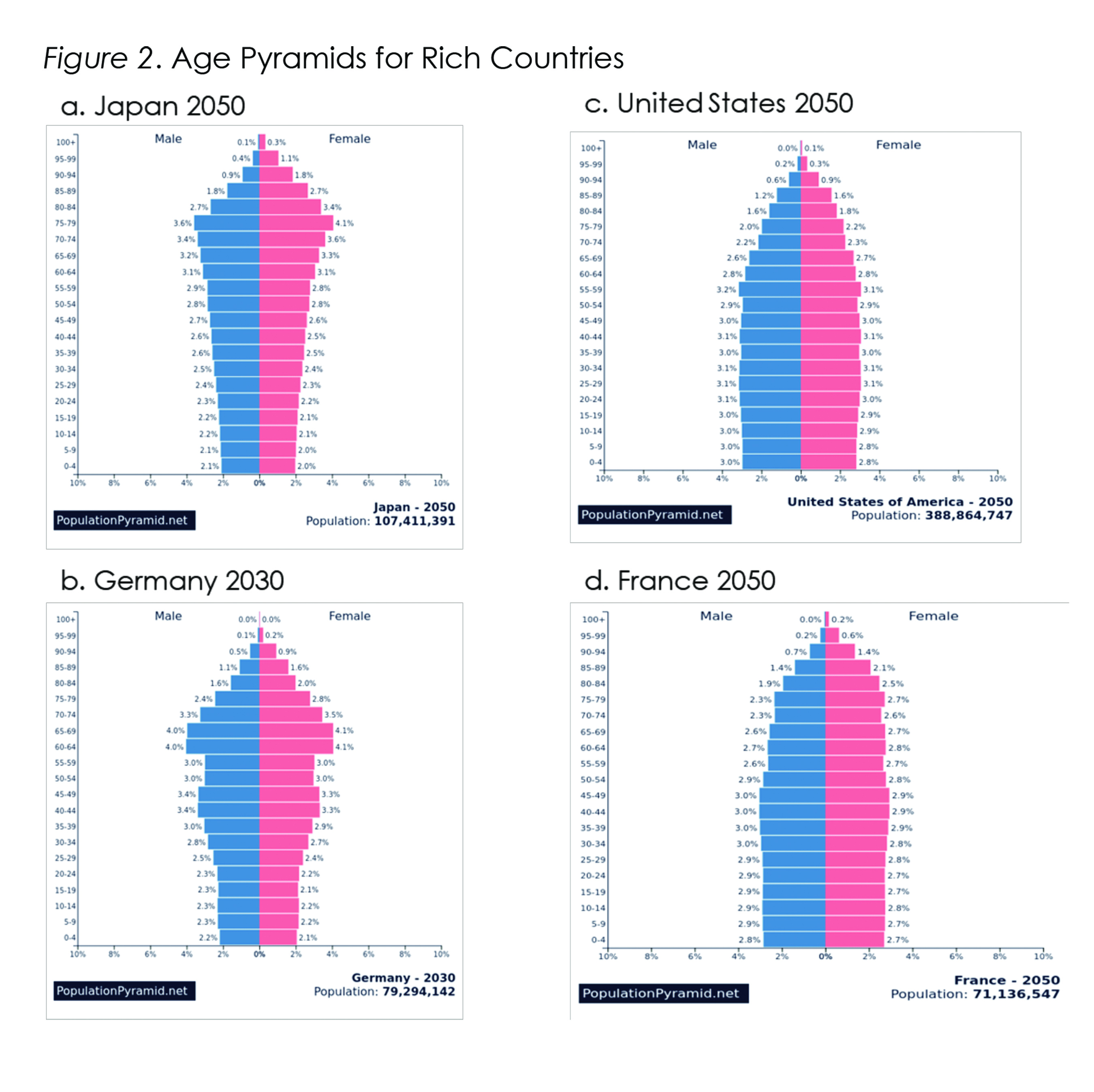
Figure 3. Growth in the Prime Working Age Population to 2100, Various Regions (in 000s)
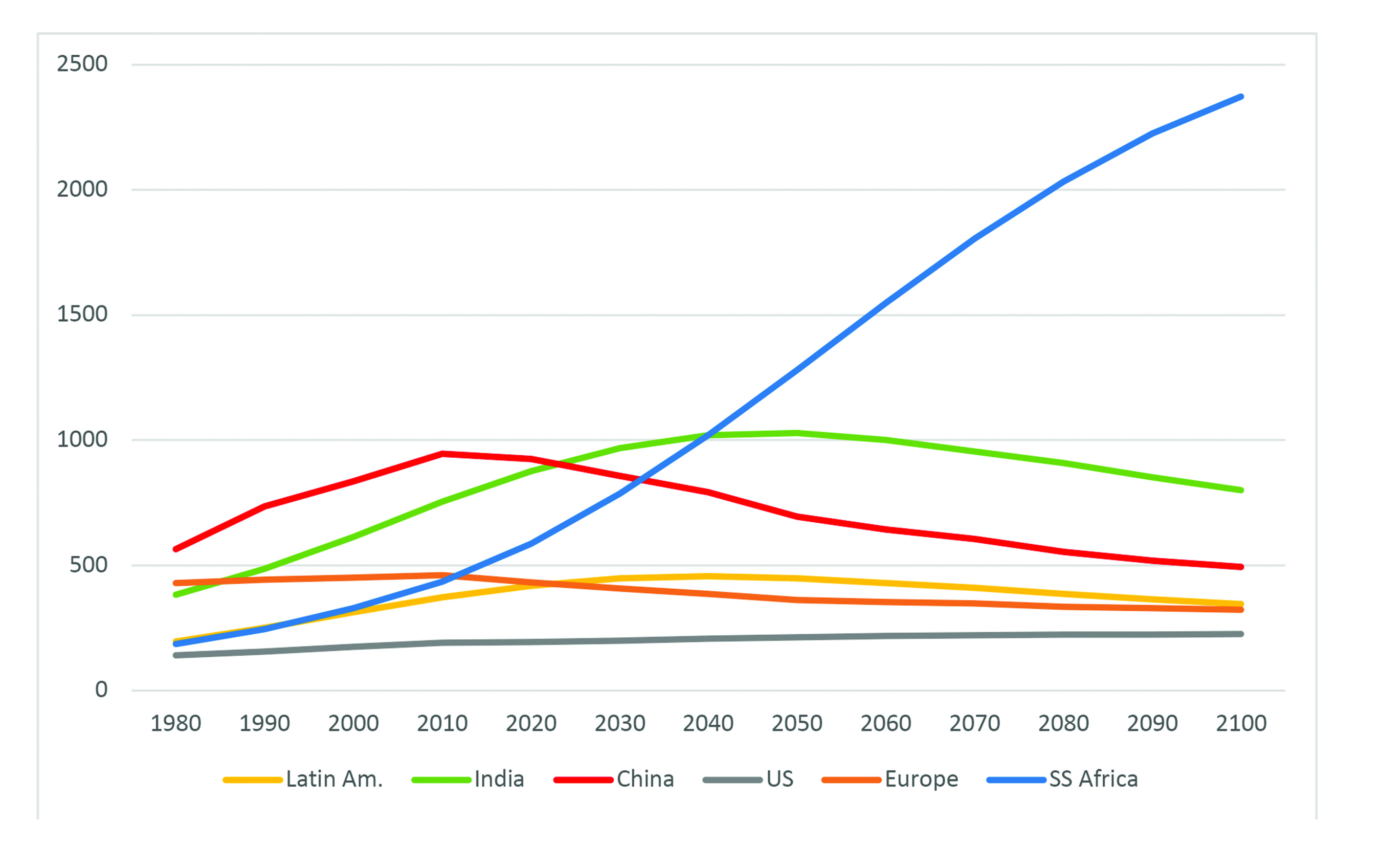
Figure 4. Ratio of Gains to Declines in Freedom House Democracy Scores, 1991–2018
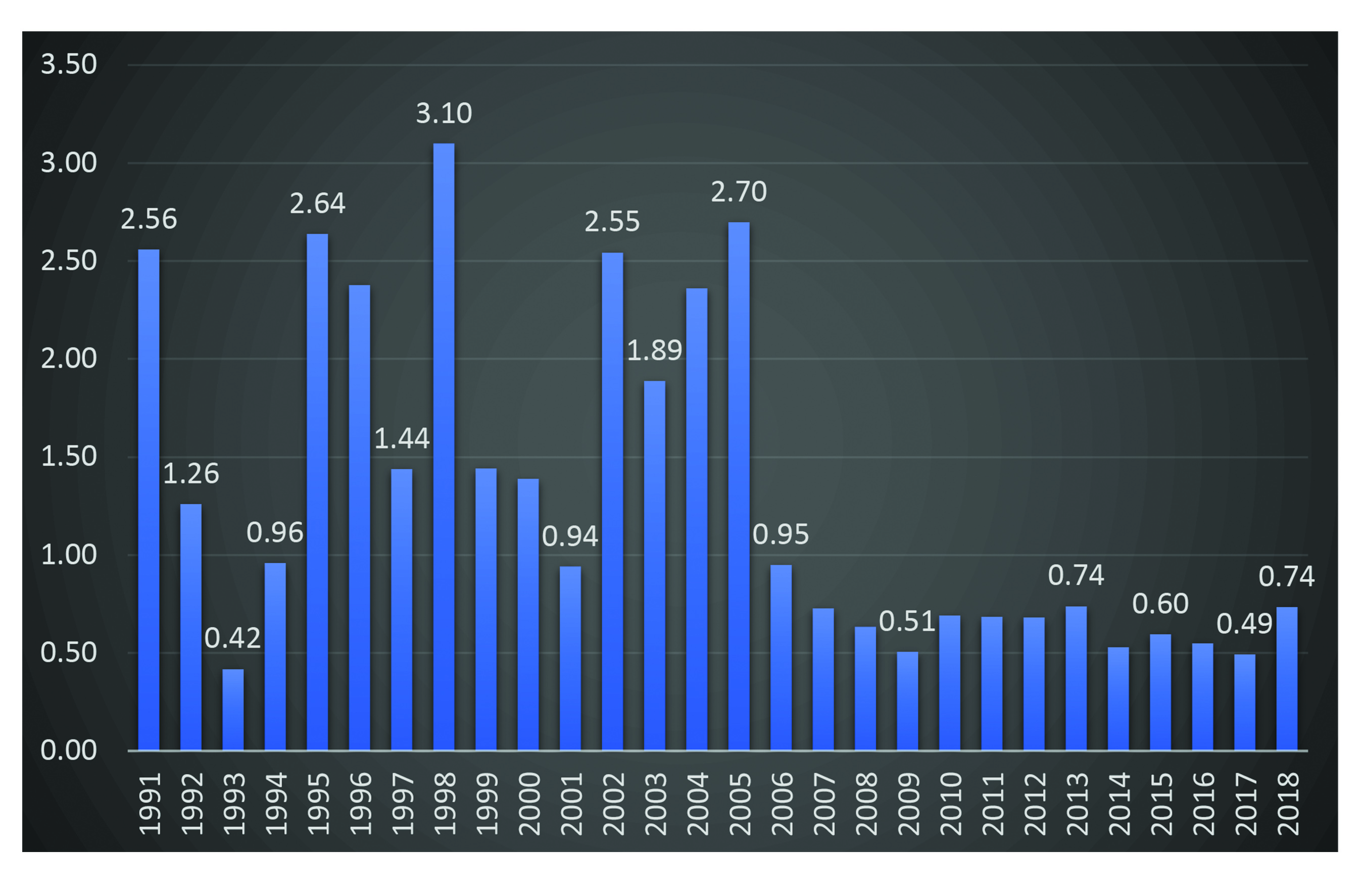
Figure 5. Rate of Democratic Breakdowns for Democracies Founded in Various Periods
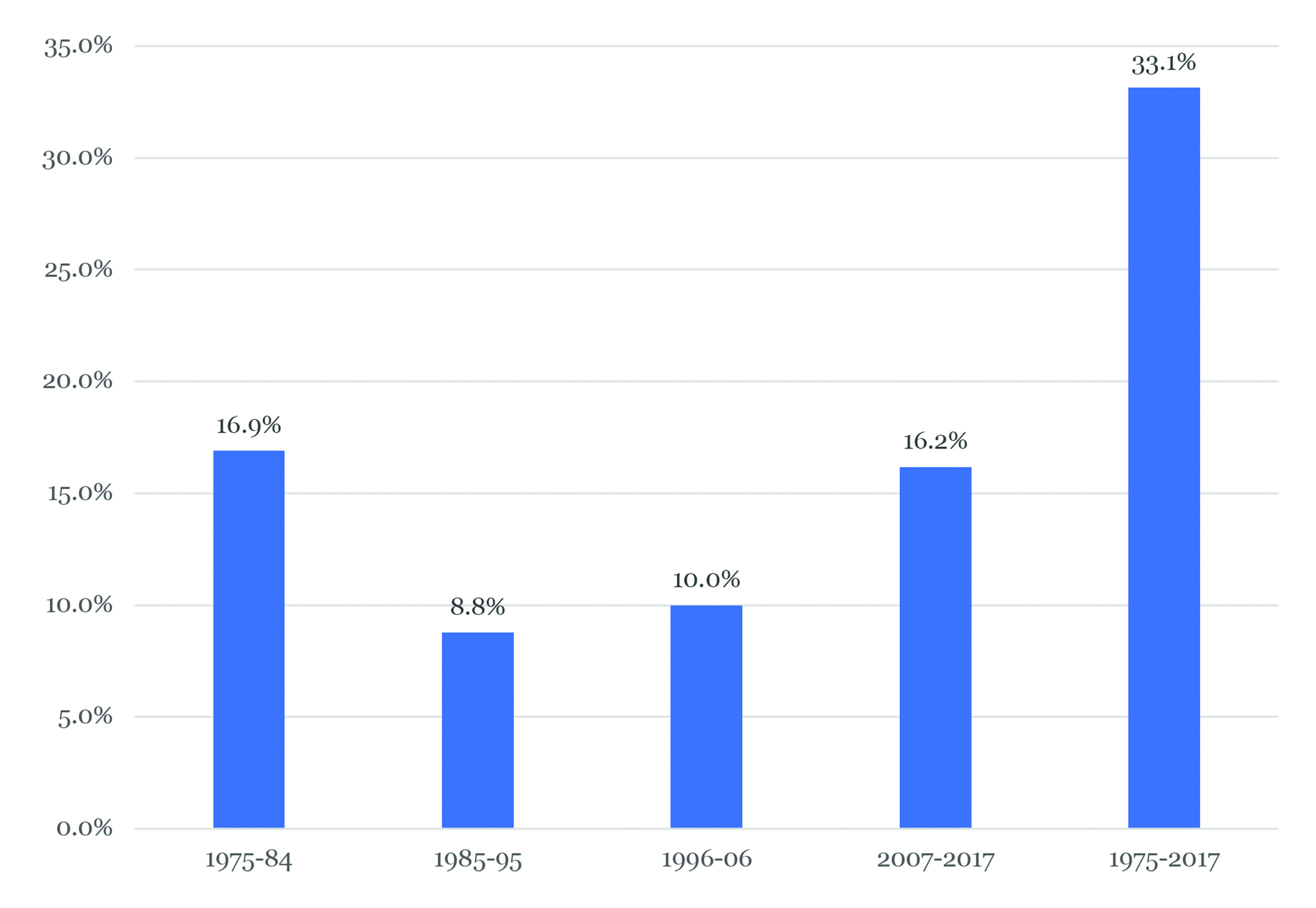
Figure 6. Trends in Political Rights, Rule of Law, and Civil Liberties in Sub-Saharan Africa, 2005–2018
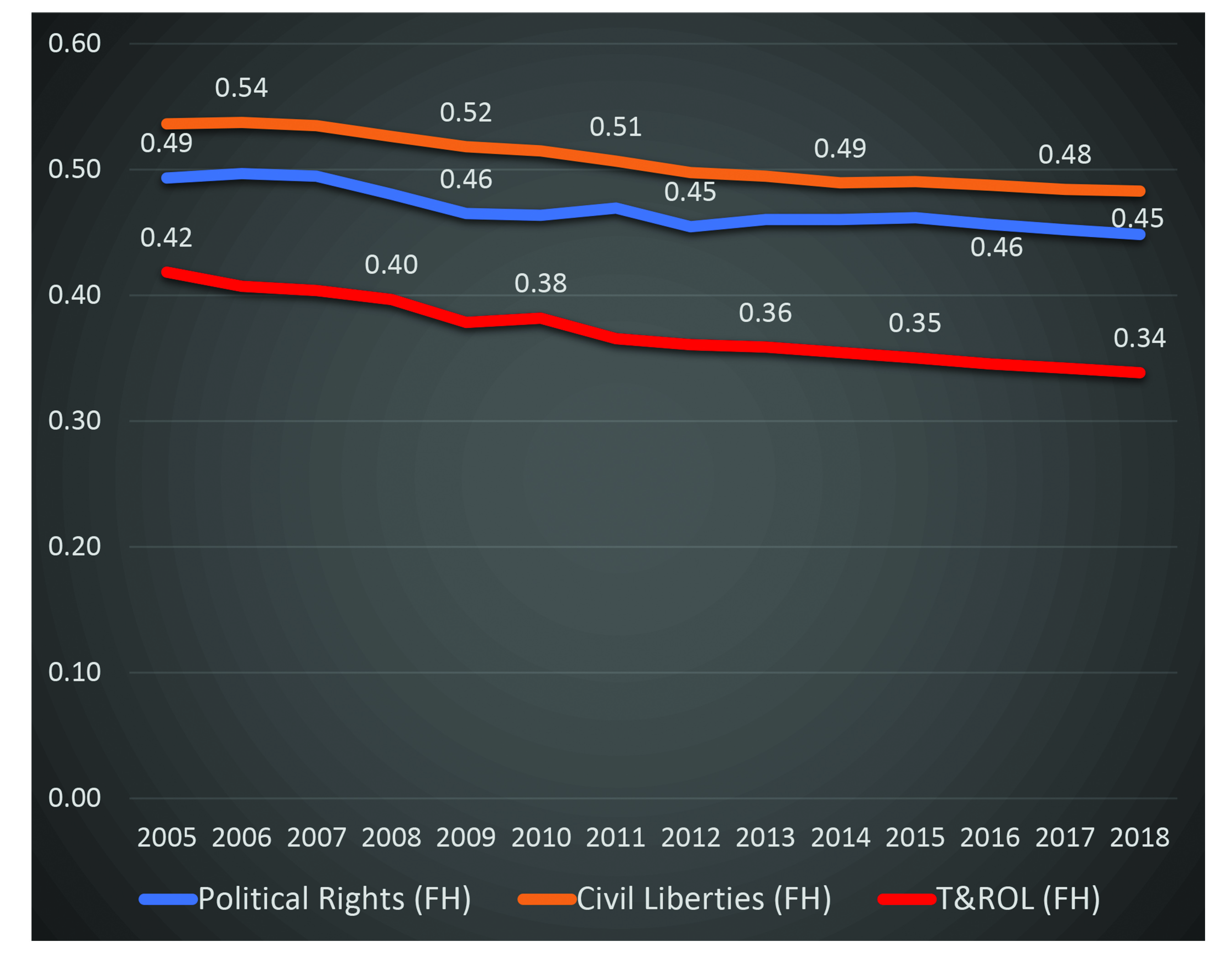
Figure 7. Trends in Political Rights, Rule of Law, and Civil Liberties in the Middle East and North Africa, 2005–2018
